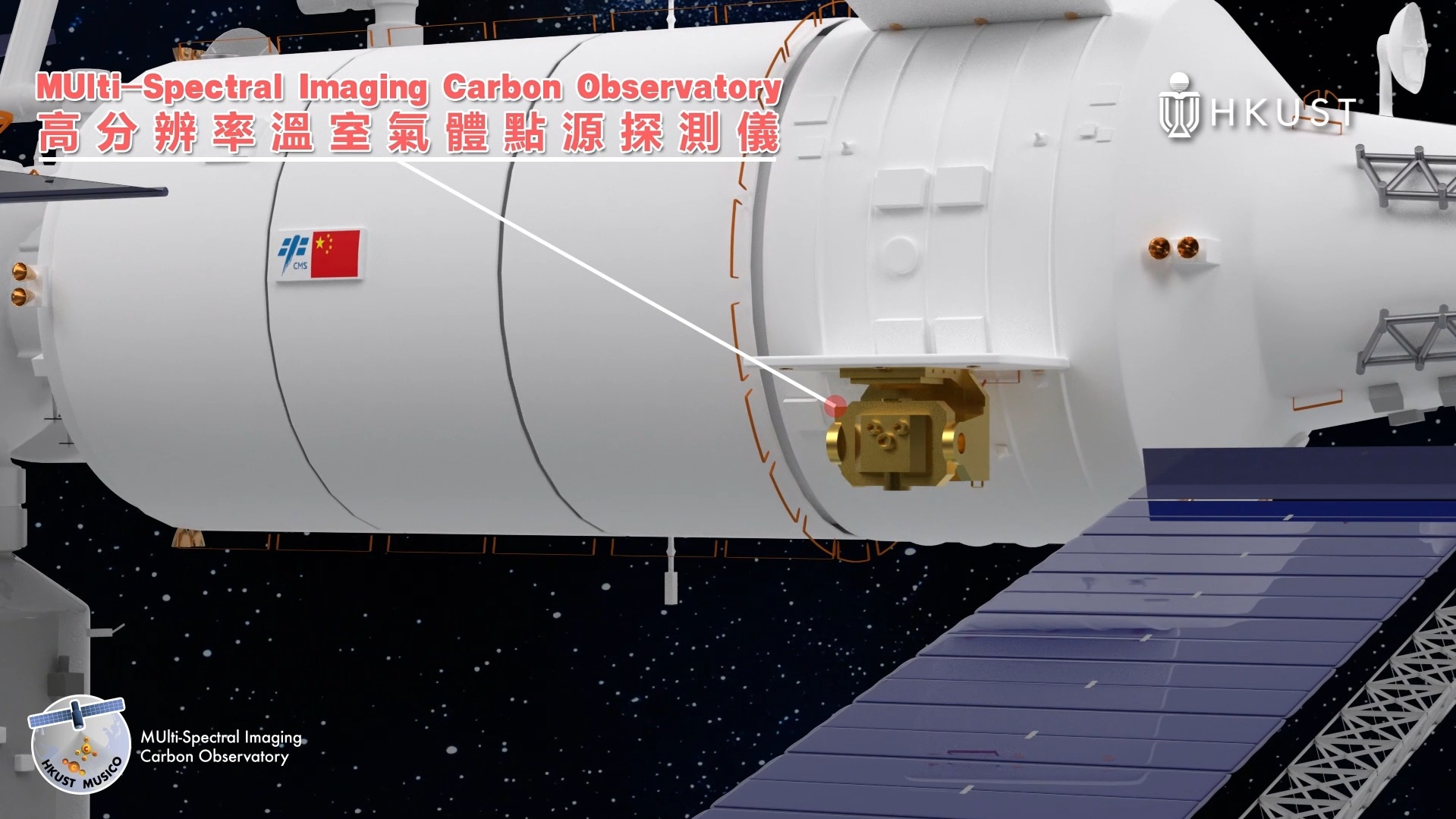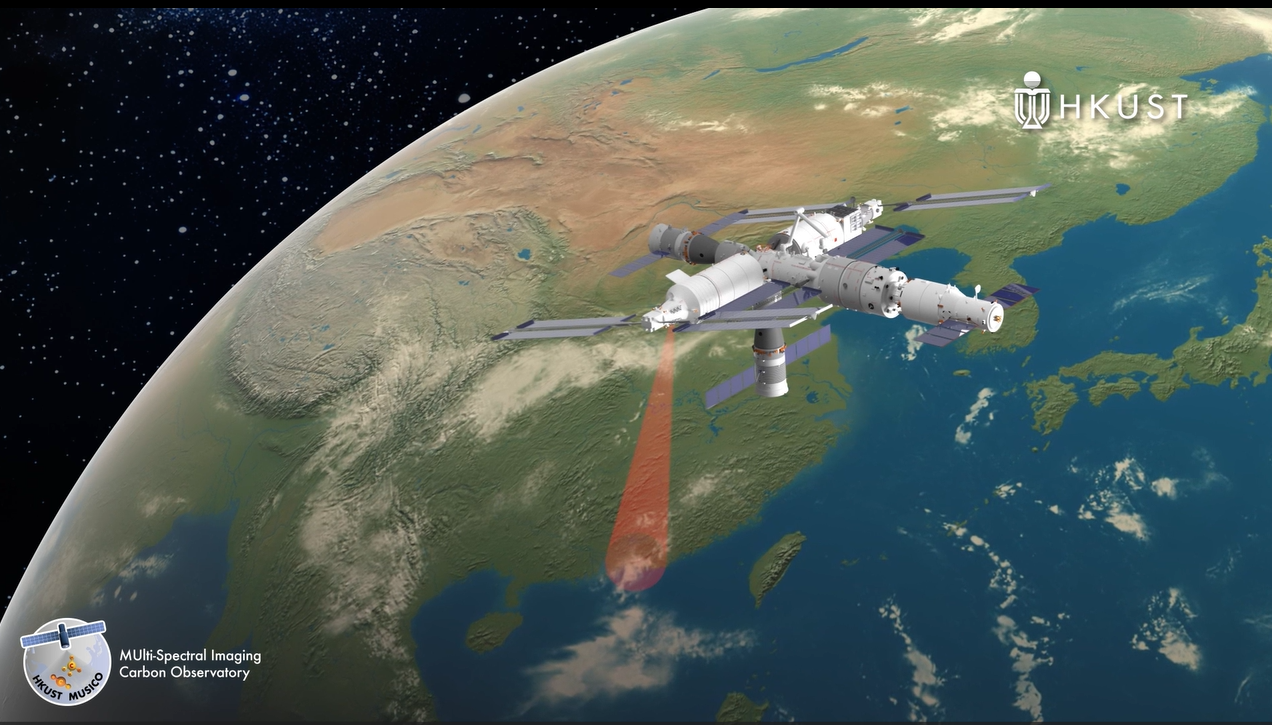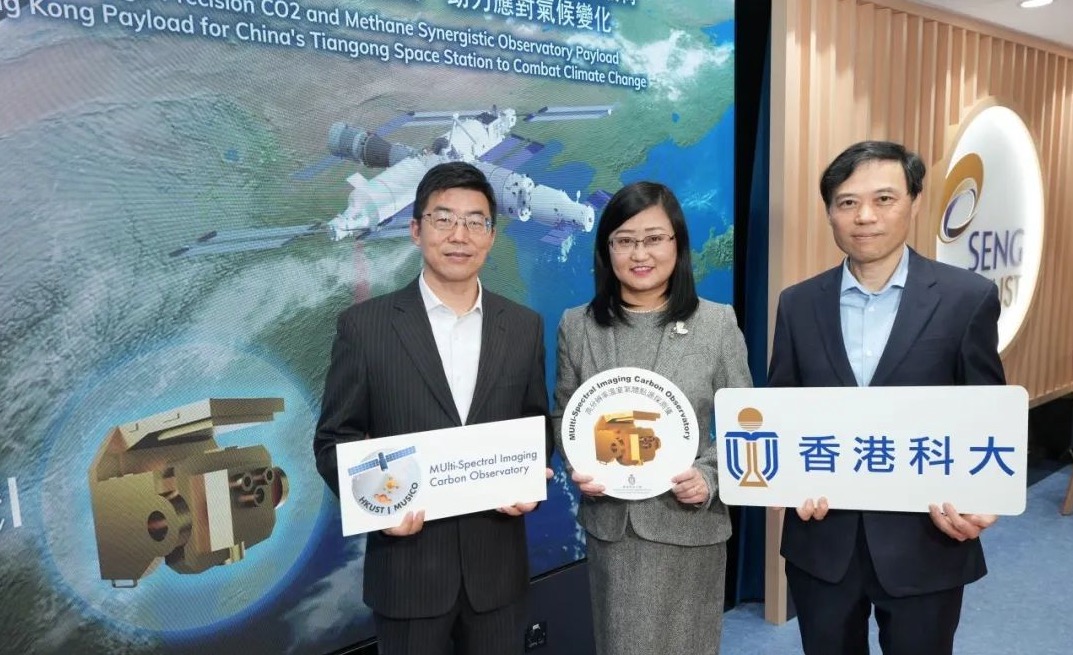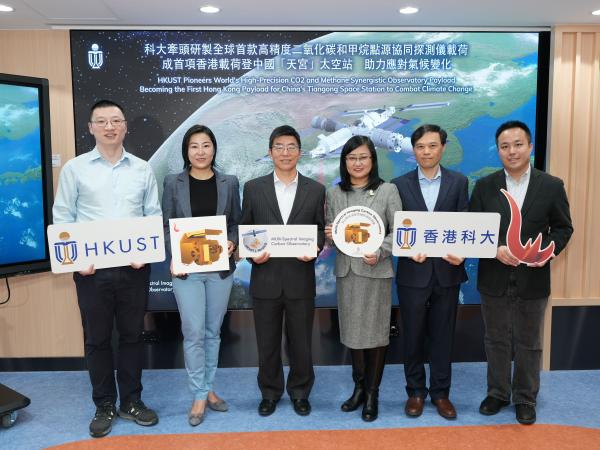Stellerus Technology Limited is honored to sponsor an unprecedented space mission led by the company’s co-founders, Professor Hui Su and Professor Limin Zhang of the Hong Kong University of Science and Technology (HKUST). This innovative project was successfully selected after multiple rounds of rigorous expert review by the Space Application Engineering and Technology Center of the Chinese Academy of Sciences (CSU.CAS).
The mission will be carried aboard the Tianzhou cargo spacecraft to the Chinese space station. It aims to precisely measure carbon dioxide and methane emissions from major sources with ultra-high spatial resolution and accuracy, combined with wide coverage. The mission will also detect potential gas leaks, significantly reducing resource waste. The data collected will enhance greenhouse gas monitoring, reporting, and verification capabilities, supporting China and the world’s transition toward carbon neutrality.
As a sponsor of this pioneering project, Stellerus Tech will utilise the collected data to help China and other countries assess carbon offset programs, improve the integrity of carbon markets, promote green finance development, and advance the global low-carbon economy.
The research and development project is jointly led by HKUST Department of Civil and Environmental Engineering Chair Professor and “Global STEM Professor” Hui Su (center) and Chair Professor and Department Head, “National Distinguished Engineer” Limin Zhang (left). Professor Chengxing Zhai from the Division of Emerging Interdisciplinary Fields serves as the project systems engineer (right).
Other key team members include: Professor Wang Zhe (leftmost) from Civil and Environmental Engineering; Professor Shi Xiaoming (rightmost) from the Division of Environment and Sustainability; Professor Li Jia (second from left) from Lingnan University; along with researchers and professors from HKUST and Hong Kong Baptist University.
To address the global challenge of climate change, China aims to peak carbon emissions before 2030 and achieve carbon neutrality by 2060. Comprehensive and accurate greenhouse gas emission monitoring is vital to achieving these goals. HKUST initiated and led the development of a lightweight, high-resolution, and high-precision greenhouse gas point-source detector to accurately acquire data on Earth’s major greenhouse gas emissions from space. The project passed the Space Application Center’s selection and review last year and is planned to be installed on the Chinese space station. It will serve as the core platform for real-time acquisition of carbon dioxide and methane concentration data.
This instrument will be the world’s first space detector capable of simultaneously monitoring these two greenhouse gases with both high resolution and high accuracy.
The detector will focus on key carbon emission facilities such as power plants, landfills, oil fields, coal mines, and natural gas plants, covering low to mid-latitude regions including Hong Kong. It will record greenhouse gas concentration data and monitor potential gas leaks to reduce resource waste.
HKUST’s research team plans to establish a greenhouse gas point-source emission database, use the data to estimate real-time carbon emissions, identify emission sources, and provide reliable, accurate, and high-frequency data for monitoring, reporting, and verification (MRV). This will assist policymakers in formulating effective emission reduction policies and evaluating their effectiveness.
The team intends to share data with various research institutions to serve the Guangdong-Hong Kong-Macao Greater Bay Area and countries along the Belt and Road Initiative, supporting the international community’s efforts to jointly address and mitigate global climate change.
 The payload instrument developed under HKUST’s leadership is expected to be the first Hong Kong Special Administrative Region payload to be launched aboard the Tianzhou cargo spacecraft to China’s “Tiangong” space station, initiating research and applications. (Illustrative images)
The payload instrument developed under HKUST’s leadership is expected to be the first Hong Kong Special Administrative Region payload to be launched aboard the Tianzhou cargo spacecraft to China’s “Tiangong” space station, initiating research and applications. (Illustrative images)

The payload instrument developed under HKUST’s leadership is expected to be the first Hong Kong Special Administrative Region payload to be launched aboard the Tianzhou cargo spacecraft to China’s “Tiangong” space station, initiating research and applications. (Illustrative images)

The “Lightweight High-Resolution Greenhouse Gas Point-Source Detection Payload” project led by HKUST was successfully selected as a space science and application project under China’s space station application and development engineering program. (Illustrative images)
The project is led by Professor Hui Su and Professor Limin Zhang, with Professor Chengxing Zhai as systems engineer. Other team members include researchers and professors from HKUST’s Civil and Environmental Engineering Department, the Division of Environment and Sustainability, Computer Science and Engineering, Public Policy, Hong Kong Baptist University, and Lingnan University.
Senior engineer Fang Man from the Space Application Center, responsible for project management, stated: “This project is the first approved by the China Manned Space Engineering Office through the space application system led by HKUST. It will conduct global greenhouse gas point-source observation on the Chinese space station, marking the first Earth science experiment on China’s space station — a milestone of great significance.”
Professor Zheng Guangting, HKUST Vice-President (Research and Development), said: “Facing complex and intertwined climate challenges, HKUST continuously applies scientific research to respond. By combining expertise from different fields, we advance research and innovation through national space missions to promote global carbon emission reduction and sustainable development. We sincerely thank the China Manned Space Engineering Office and the Chinese Academy of Sciences for this valuable opportunity to extend our breakthrough research from the ground to space, helping create a sustainable future and bringing space mission results back to Earth to improve daily life.”
Professor Hui Su, Executive Director of HKUST’s Institute of Space Science and Technology and project leader, said: “Our HKUST team is honored to lead this important space mission, demonstrating our years of commitment to sustainable development through cross-regional, cross-institutional, and interdisciplinary collaboration. This project not only showcases the close cooperation between Mainland China and Hong Kong SAR in science and technology innovation but will also further promote exchanges in aerospace technology. We look forward to conducting experiments after the Tianzhou cargo spacecraft’s launch and orbit insertion. We welcome support from all sectors of society to sustain the research and contribute jointly to achieving net-zero emissions and mitigating global climate change.”
Professor Limin Zhang, “National Distinguished Engineer” and co-leader, said: “HKUST has been committed to advancing Hong Kong SAR’s aerospace technology development. Leveraging our leading engineering capabilities, we continuously collaborate with academia and industry to promote national aerospace research and development. Our team gathers world-class talent with outstanding abilities, creative thinking, and ambitious goals. In 2023, we successfully launched the first high-resolution optical satellite from Hong Kong’s higher education sector for environmental and disaster monitoring. Now, we are honored to lead the global greenhouse gas point-source detection project, proving once again that under national support, Hong Kong and Macau’s scientific personnel can undertake more important aerospace projects.”
In June 2023, the China Manned Space Engineering Office solicited manned space station science experiment projects worldwide and entrusted the overall department with the selection process. After multiple rounds of expert review, the “Lightweight High-Resolution Greenhouse Gas Point-Source Detection Payload” project led by HKUST was successfully selected as a space science and application project under the China space station application and development engineering program. It is planned to be launched aboard the Tianzhou cargo spacecraft for orbital experiments.
Source: HKUST News







